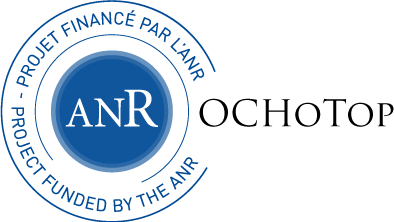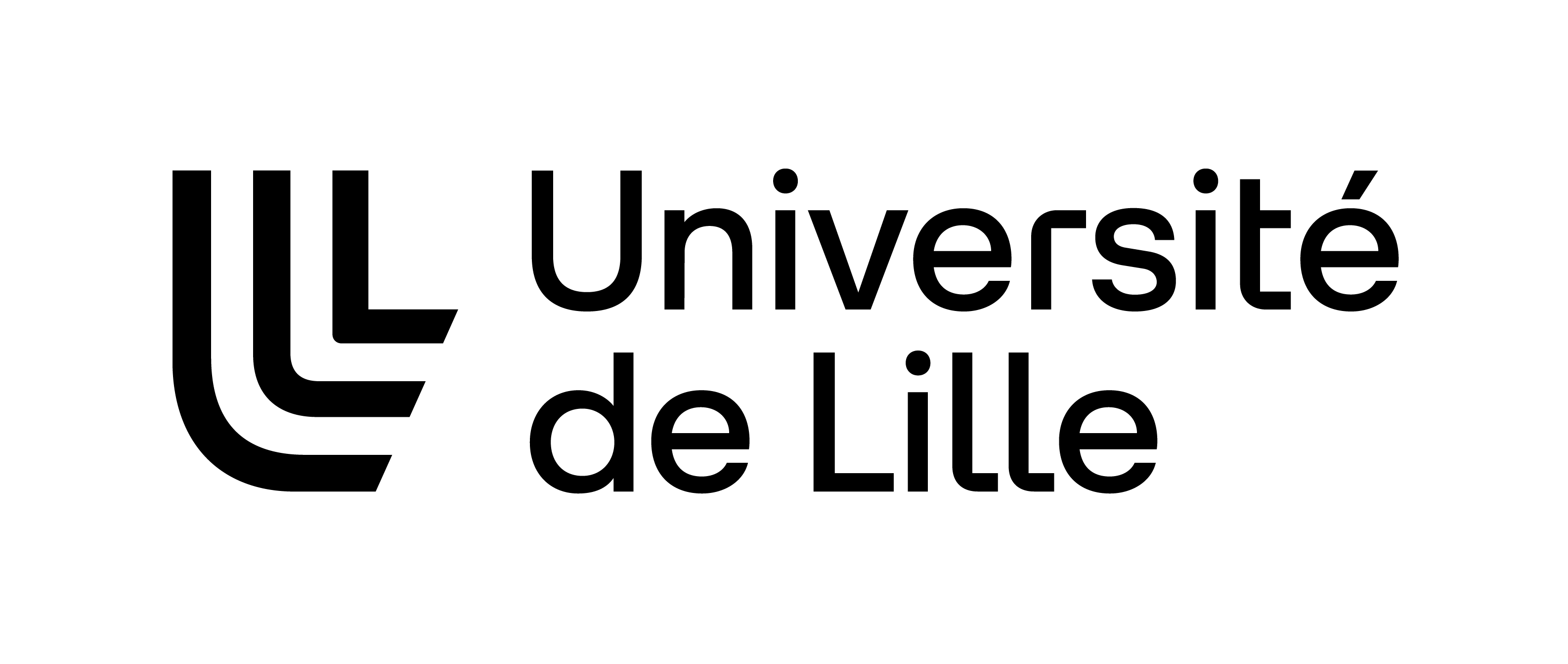Projet FNS-ANR OCHoTop : Workshop d'ouverture, Lausanne (9-11 décembre 2019)
Programme des exposés




Projet FNS-ANR OCHoTop : Workshop d'ouverture, Lausanne (9-11 décembre 2019)Programme des exposés |

|

|

|

|
A classic theorem of Gelfand-Naimark says there is an equivalence of categories between compact Hausdorff spaces and the opposite category of commutative C*-algebras. This correspondence led to the point of view that C*-algebras are non-commutative generalizations of topological spaces. The study of C*-algebras from this perspective is the subject of non-commutative geometry/topology/homotopy theory. I will talk about the (infinity)-category NSp of "non-commutative CW-spectra", which is the stabilization of the category of non-commutative CW-complexes. Let M be the full subcategory of NSp spanned by suspension spectra of matrix algebras. The objects of M form a set of compact generators of NSp. It follows that NSp is equivalent to the category of spectral presheaves on M. Furthermore, we introduce a natural filtration of M, which we call the rank filtration. It is analogous and related to the rank filtration of K-theory. We will describe explicitly the subquotients of this rank filtration. The description involves complexes of direct-sum decompositions, which also appear in the description of the quotients of the rank filtration of topological complex K-theory. As a consequence, we can give a very explicit model for the rationalization of NSp. (joint with Ilan Barnea and Tomer Schlank).
JW with B. Calmès, Y. Harpaz, F. Hebestreit, M. Land, K. Moi, D. Nardin, T. Nikolaus & W. Steimle. I will talk about localization sequences for the Grothendieck-Witt theory of Poincaré categories, and establish a fiber sequence relating Grothendieck-Witt theory, L-theory, and algebraic K-theory. We will then see how these sequences give rise to general forms of Karoubi periodicity theorems for the Grothendieck-Witt theory of discrete rings, and to tools for approaching the Grothendieck-Witt theory of Dedekind rings.
The purpose of this talk is to introduce a method to build cofibrant and fibrant resolutions in some combinatorially defined categories such as operads, right modules, bimodules or infinitesimal bimodules over an operad. These resolutions are motivated by the Goodwillie-Weiss' calculus for which the polynomial approximation can be expressed in terms of derived mapping space of objects in one of the aforementioned categories. This is a joint work with Benoit Fresse and Victor Turchin.
I will describe joint work with Joana Cirici, Muriel Livernet and Sarah Whitehouse. Let k be a commutative ring with unit. We endow the categories of filtered complexes and of bicomplexes of k-modules, with cofibrantly generated model structures, where the class of weak equivalences is given by those morphisms inducing a quasi-isomorphism at a certain fixed stage of the associated spectral sequence.
I will introduce cobordism categories of Poincaré chain complexes and more generally Poincaré objects in any hermitian quasi-category. They serve two purposes: On the one side they are receptacles for refinements of various manifold invariants, such as Ranicki's symmetric signature and Dwyer, Weiss and Williams's A-theoretic Euler characteristic, for which we give a uniform construction. On the other they give rise to a new description of Grothendieck-Witt spaces by combining the parametrised surgery of Galatius, Madsen, Randal-Williams and Weiss with Ranicki's algebraic surgery, as I will briefly explain. This will be exploited by E. Dotto in a follow-up talk as the homotopy type of these algebraic cobordism categories can be determined rather explicitely in terms of algebraic K- and L-theory.
A rigid R-matrix in a monoidal category and the Reshetikhin-Turaev functor on the category of tangles allow us to define an invariant of long knots. Known examples come from the categories of relations and spans over sets as well as finite dimensional vector spaces. Based on this construction, to each Hopf algebra H with invertible antipode, one can associate a universal long knot invariant ZH(K) taking its values in the convolution algebra ((D(H))o)* of the restricted dual Hopf algebra (D(H))o of the quantum double D(H) of H. That extends the constructions of universal invariants mostly developed in the case of finite dimensional Hopf algebras.
Configuration spaces consist in ordered collections of pairwise disjoint points. The collection of all configuration spaces of a given manifold has the structure of a right module over some version of the little disks operad. In this talk, I will present algebraic models for the real or rational homotopy types configuration spaces and framed configuration spaces of manifolds as right modules. The proofs all rely on operad theory, more precisely Kontsevich's proof of the formality of the little disks operad and - for oriented surfaces - Tamarkin's proof of the formality of the little 2-disks operad. (Based on joint works with Campos, Ducoulombier, Lambrechts, and Willwacher.)
Recently, a lot of attention in algebraic topology has been directed into understanding commutativity in equivariant homotopy theory. Work of Blumberg and Hill introduced N-infinity operads, govering various "levels" of commutative structure that one might have in equivariant world. In this talk I will present when different N-infinity operads give us different commutative structures on their algebras. This is work in progress with Dave Barnes. I will also discuss uniqueness of rational equivariant complex K-theory spectrum when we view it as a naive or genuine equivariant commutative ring spectrum (for a finite group). This is joint work with Anna Marie Bohmann, Christy Hazel, Jocelyne Ishak and Clover May.
In 1947, Steenrod published the first definition of his celebrated Sq cohomology operations. His construction relied on a choice of coherent homotopies enforcing the derived commutativity of the AW product of cochains. In this talk, I will characterize Steenrod's choice axiomatically and use it to derive another fundamental construction associated to ordered simplices: the nerve of higher-categories. Additionally, I will describe, following Boardman-Vogt's terminology, a finitely presented E-infinity prop and derive Steenrod's construction effectively from a cellular E-infinity bialgebra structure on the interval.
The Cobordism Hypothesis provides a beautiful interplay between extended topological field theories and dualizability conditions, allowing for a conceptual explanation of certain finiteness conditions appearing in representation theory, and, vice versa, a geometric understanding of algebraic objects. In turn, En-algebras, which are algebras for the little disks operad, (e.g. associative algebras and quantum groups) provide important examples. I will explain why every En-algebra leads to a categorified topological field theory using dualizability arguments. Furthermore, I will explore extensions and further directions.
A multicomplex (also known as a twisted chain complex) is an algebraic structure generalizing the notion of a chain complex and that of a bicomplex. These structures have arisen in many different places and play an important role in homological and homotopical algebra. I will talk about a family of model category structures on the category of multicomplexes, with weak equivalences those morphisms inducing an isomorphism at a fixed stage of an associated spectral sequence. This is joint work with Xin Fu, Ai Guan and Muriel Livernet.
In my talk, I will present a new approach to a class of non-semisimple representation categories, more specifically non-semisimple modular tensor categories, via homotopy theory and low-dimensional topology. This will lead to so-called derived modular functors. It is already well-known that for a semisimple modular tensor category, the Reshetikhin-Turaev construction yields an extended three-dimensional topological field theory and hence by restriction a modular functor. By work of Lyubachenko-Majid the construction of a modular functor from a modular tensor category remains possible in the non-semisimple case. We explain that the latter construction is the shadow of a derived modular functor featuring homotopy coherent mapping class group actions on chain complex valued conformal blocks and a version of factorization and self-sewing via homotopy coends. On the torus, we find a derived version of the Verlinde algebra, an algebra over the little disk operad (or more generally a little bundles algebra in the case of equivariant field theories). The concepts will be illustrated for modules over the Drinfeld double of a finite group in finite characteristic. This is joint work with Christoph Schweigert (Hamburg).
|
1 décembre 2019 |